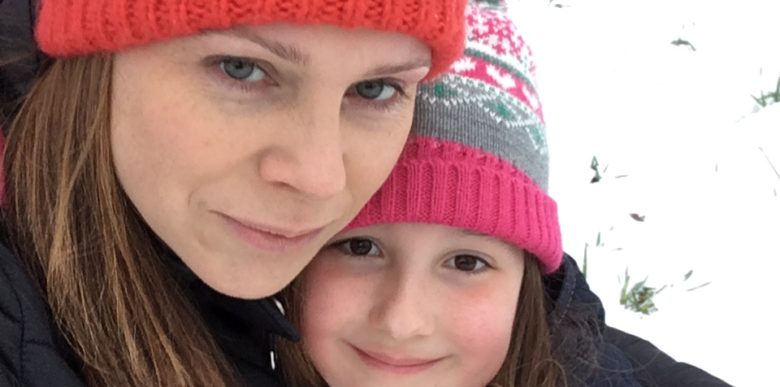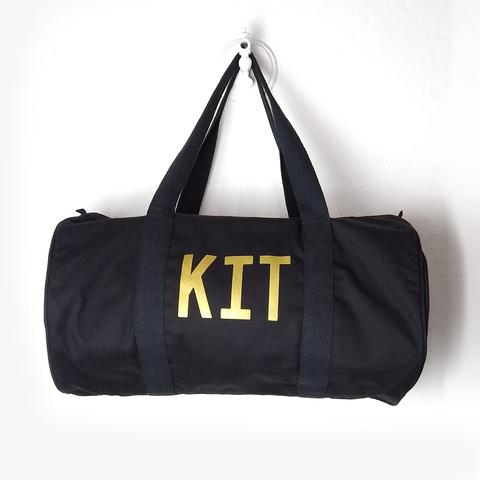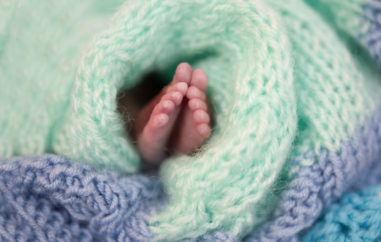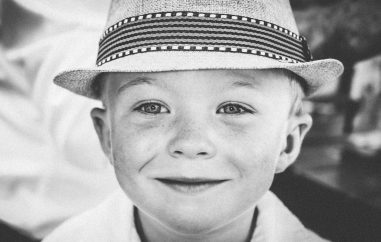Anna Louise Cunniff - 15 May 18
It is only 9am, and I feel like I have run a marathon. A mental marathon, with multiple hurdles. I know this is the case for 99% of parents on the morning school run, but cutting out sensory issues in our house would significantly lower my blood pressure. Prior to my daughter being diagnosed with Dyspraxia, aged 5, I would not have known a ‘sensory issue’ if it came up and bit me. I had never heard the phrase before and was blissfully ignorant of what lay ahead.
As a semi-seasoned parent, in retrospect I wonder why there is not more explanation of this when a Dyspraxia (or other learning difference) diagnosis is handed over on a plate. Medical circles prefer the term ‘Developmental Coordination Disorder’, which places focus upon motor skills to the neglect of the attached bundle of co-existing issues. The ‘dys’ family are rarely found in isolation, and for my dyspraxic nine year old daughter, sensory issues are top of the list. That features overlap is no surprise really, given the density and interconnections of the brain. I’ve noticed a significant number of dyspraxic and dyslexic people also have synasthesia-type traits. Often these traits can be advantageous, however, I would gladly trade my daughter’s sensory issues most days.
Sensory processing is an automatic reaction of the Central Nervous System in typically developing children. Our ‘sensory filter’ selects information relevant to our current activity, allowing us to adjust to the environment. For many children with specific learning differences/developmental disorders (how I dislike that term!), information is not processed automatically, filtering either too much or too little information. Various elements of our sensory world exist in parallel, such as the Proprioceptive System and the Tactile System, protecting and allowing us to discriminate threat from safety.
These are especially relevant to children with Dyspraxia, with the Proprioceptive System processing feedback about movement, body awareness, motor-control and planning. It also integrates messages from tactile and vestibular systems, resulting in a sense of self in space (proprioception). When there is a blip within this system, it can compromise all of the above. For my dyspraxic child in the early years, this led to falling over, crashing into things (many children seek these experiences for sensory feedback), understandable resistance to new tasks and sensory issues.
For children with sensory issues, over/under-reactive discrimination may lead to issues such as negative reaction to unexpected touch, avoidance of certain textures or meltdowns from sensory overload. My child experiences all of these. These factors combined can lead to challenges in everyday life (tooth brushing; hair washing; face cleaning) and within the classroom (excessive fidgeting; anxiety). When my daughter requests a pony tail (yes, yes, we have come so far!) I silently clench my jaw as I notice the ‘carrot ear’ effect that I long to hose out. She can’t tolerate anyone touching her ears. At least I have one (possibly overly) clean child to compensate- I’ll take the good stuff and run.
In my daughter’s case, our main issues are: touch and certain noises (electric cars, alarms, hand-driers), although over time she seems to become less sensitive. In the early school days, she found the noisy playground overwhelming. Perhaps this, combined with clothing sensitivity, explains why she stripped off her uniform just as we were ready to leave. I have more insight as the years pass, and I can imagine how sensory and noise issues must bombard throughout the school day. Clothes are swiftly shed upon returning from school with a preference for total nudity or an occasional fluffy blanket. Expect a naked house if you visit us.
My first memory of our sensory journey was taking my daughter for a haircut the day before she started school. She had a meltdown on the way, lashing out at me. This was pre-diagnosis, and I could not understand why she had such an aversion to having a simple haircut. These days, she enjoys getting her hair cut (biscuit-related bribery has helped along the way) and we are moons away from the girl who could not tolerate hair brushing as a toddler.
Other aversions include cafe chairs (‘scratchy’), toilet paper (never trust a towel in our house…), dentists (she has run away) and the wrist bands at activity centres (we now pin them to her top). Simple fixes make all the difference. I would also recommend picking your battles- so her outfit looks like she’s just left a young offender’s institution: does it really matter?
We have had many trials and tribulations with shoes and tights. I say ‘we’, as sensory issues impact the whole family, from trying to get ready for school to longing for peace in the evenings instead of three hour tortuous bedtimes.
At one point, school declared her unzipped boots a safety hazard. If you didn’t laugh, you’d cry. I had been so pleased that she could tolerate any form of footwear at that time… We had tried Velcro straps but she tightened them to the point of drawing blood. Now that she is nine, thankfully she can tolerate slip on shoes. I feel for her, knowing that when she changes for PE at school, putting on her trainers can feel like being stung by bees.
The tights issue was easy to rectify- leggings! Oh, H&M leggings, how I love you for your softness and lack of seams. Once you find something that works, buy it in bulk. Thankfully, we have never had too much of a problem with clothes. From our experience, many of these challenges improve over time with maturity, self-awareness and the ability to explain to others why something is a problem.
I know of other children who refuse school due to clothes issues, tolerating only a fluffy blanket around the house. There is frequent changing in our house, from one outfit to another (“it’s scratchy”, “it feels funny”) but this is a house of girls and in the greater scheme of things that’s okay. It seems that as my child develops, her self-awareness of challenges mean she knows what she can tolerate and we stick with that. Some days, the outfit of choice can be ‘interesting’, but priorities change over the years and if it makes her life easier- who cares?
By far, the hardest aspect of my child’s sensory issues has been the ‘hug’ factor. I come from a very tactile family with a default ‘hug’ setting. It’s those Irish genes. I cannot hug my child without giving warning and this is, more often than not, rejected. It hurts to be pushed away by your child, despite knowing the reasons why. Kisses are out of the question, they are described as “yuck”. Despite this, when on her terms she will share bone-crushing hugs, but they need to come from her.
On one level I am comforted that, at night, deep pressure massage is the only way to get her to sleep. I feel this is my hug equivalent. Sleep challenges feed off sensory issues and like other ‘sensory children’, my child finds it hard to wind down. She rarely sleeps inside her bed, but with a fluffy blanked arranged over her. Other things that help include using a night light and trying to stick to routine. Nine years of drawn-out bedtimes have led to a Melatonin prescription. I just hope it works…
Christmas saw the first cinema trip in a year, thanks to that advert which is sensory overload for anyone, never mind a dyspraxic child!
Frequently ‘sensory children’ may arrive home from school exhausted from their efforts to focus, combined with sensory overload from hectic interactions that school brings. This can result in withdrawal at home, as a means of recovery or acting out as soon as the child is in their ‘safe space’. Now that I understand sensory issues, this helps make sense of her experiences and some of the associated behaviours. I also used to wonder why she constantly asked where we were going and what we were doing, but now I understand reassurance is needed that she can handle the sensory side of things. Much of the behaviour is a form of bracing and self-protection, from what I can see.
Dealing with so much on a daily basis, it’s no wonder that many children act out or demonstrate anxiety (skin picking in our case). Being clear about where we are going and what is going to happen, helps. Too much choice, in our case, doesn’t help the situation.
As my daughter matures, we have recently noticed that hormonal fluctuations lead to increased sensory sensitivity and anxiety. This comes in peaks and troughs. I am sure that in time, with maturity, self-awareness and greater ability to self-regulate, these issues will continue to improve. I also feel that the school years for children with learning differences will be the most challenging time. After this, they can pursue an area of strength and with that comes confidence and hopefully a sense of control. My child has already drawn up a plan for her future business: a tea room. It makes me happy to think of it!
Things that have helped our journey include playing ‘detectives’- “I experience this because” and “what might help me is…” Understanding the impact of any activity on the senses helps in trying different approaches to minimising discomfort. I have found that teaching how to problem solve, becomes second nature in the long term. For example, with tooth-brushing we know that ‘stressors’ may be visual (bright lights); auditory (running water); smell (toothpaste); taste (toothpaste); touch (brush/water); proprioception (body awareness/regulation of pressure) and vestibular (balance/reaching/bending).
Tackling issues with tooth-brushing, we 1) organised the sensory system (firm cuddle; 2) changed the environment (fun music) 3) adapted the tool (vibrating toothbrush) 4) used verbal rehearsal 5) a timer and 6) changed position (she leans back onto me). This all sounds very well planned and formal, but the truth is our journey has been absolute trial and error and a steep learning curve for the whole family. It is, however, useful to have an awareness of how to modify the environment to meet your child’s sensory preferences. The good news is that children develop their own strategies in time and things do become easier.
Given the sensory and additional challenges our children face, it’s useful for them to understand why they find certain things harder than others, and that it is no reflection on their intelligence or worth. Age-appropriate insight into the reasons why children find certain activities (from writing to catching a ball) challenging, can help raise confidence/self-esteem and develop coping strategies. Luckily, we have amazing school support and people who understand her specific issues.
I’ve always been a ‘behind the scenes helper’/’don’t look at me’ type, but I’ve realised it helps to have an active presence at school, on behalf of your child. Those school-home links are important for our children but for a person like me, I have had to push myself out of my natural comfort zone. As parents, we don’t want our children to stand out and we don’t want to make a fuss. But sometimes, we need to stand up and be counted.
These musings are an offering to share some of the experiences many of us encounter in our parenting journey. Our children motivate us daily and we learn alongside each other as we face these life lessons. I found parenting my neuro-diverse child harder before I understood why she behaved the way she does- having some insight helps. Regardless of sensory issues and some weird and wonderful days, she is my child. I love her as she is. I wouldn’t change a thing about her but I want to smooth the path and make her life easier. The past nine years have changed me as a person. I am no longer as carefree but as time passes, we grow together and I feel that spark returning. Now I want to share and help others treading this path. I really hope I can find a way to do this…
Please google ‘Lottie, Dyslexia’ to see her Vlog!
Did you enjoy this post? If so please support the writer: like, share and comment!
Why not , too? You can share posts & events immediately. It's free!
Mummy of two gorgeous girls- 9 and 7. I was once a clever academic (a psychology Doctorate was gained somewhere along the line) but now find splashing in the sea with my family is much more fun! Over the years, I’ve been lucky enough to work on research projects as diverse as mental health in unaccompanied asylum seeking children, addictive behaviour and parental adjustment to a child’s chronic illness. My passion now lies in promoting Inclusion and strength based approaches to neurodiversity.
LIST




















